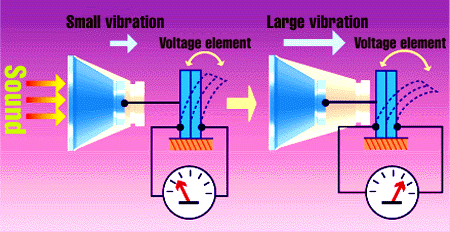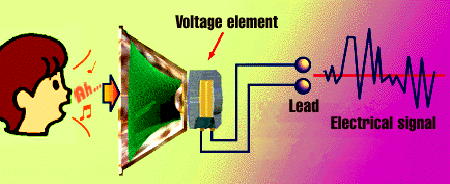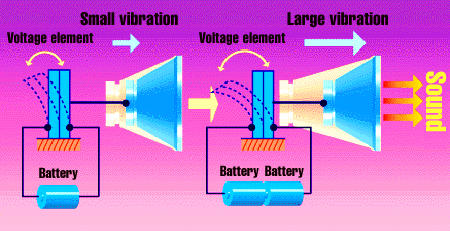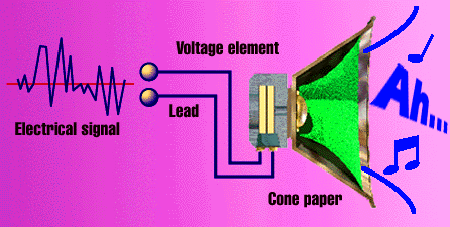
 |
|
 |

| All types of terminal devices used in electronic communications operate by converting data into electrical signals. Telephones convert sound into electricity and electricity into sound as they send signals over long distances. |
| How is Sound Converted Into Electrical Signals? Let's think about the microphone. Sound (vibrations in the air) causes vibration in an acoustic membrane which applies distortion to a piezoelectric element which generates electricity. The greater the vibration in the membrane, the greater the distortion in the element, and the higher the voltage produced. |

|
| The microphone uses audio vibrations to create distortion in a piezoelectric element, where they are converted into electrical signals. |
 |
| *Piezoelectric elements are elements which produce electrical energy in proportion to mechanical distortion. |
| How Are Electrical Signals Converted Into Sound? Fluctuations in voltage are converted into piezoelectric element distortion, and used to create vibration in an acoustic membrane. These vibrations are transmitted into the air as sound waves. The higher the voltage, the greater the distortion created in the piezoelectric element, and the greater the vibration in the membrane. |

|
|
|
| The speaker converts electrical signals into distortions in a piezoelectric element, which transmits them as vibrations to the speaker cone where they create sound waves. |

|


|
Return to the Gakushukan Home Page | ||

|
Back | Forward |

|